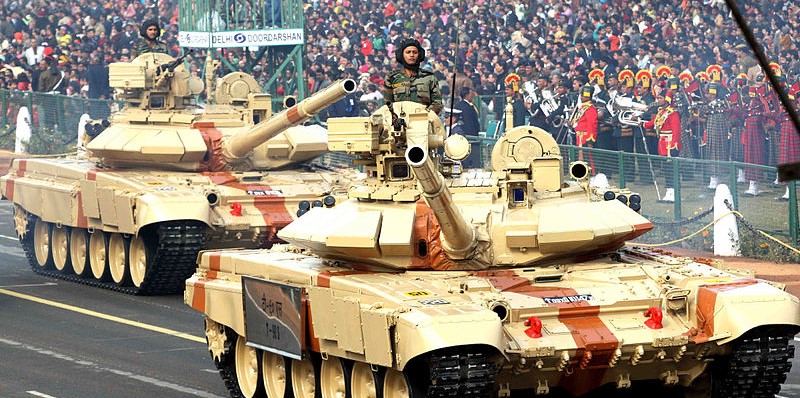India’s defence splurge
August 27, 2018 | Expert Insights

New Delhi approves $6bn military spend as Asian arms race escalates.
Background
Over the past three years, India has been named as one of the world’s top arms importers. Industry experts believe that India aims to replace an aging Soviet-era military with up-to-date weapons as a deterrent to China. In 2014-15, India increased its defense spending by 12% and opened the domestic weapons industry to foreign investment to help rebuild the military and constrict the gap with China.
Finance Minister Arun Jaitley stated that “modernization of the armed forces is critical to enable them to play their role effectively in the defense of India’s strategic interests.” In 2014, Jaitley also enhanced the foreign investment limit in the domestic defense industry to 49% from 26%. “Companies controlled by foreign governments and foreign private sector are supplying our defense requirements to us at considerable outflow of foreign exchange,” he noted.
However, there has been an increased effort of foreign procurement instead of greater expenditure on domestic manufacturing. India’s announcement of a $6.5bn acquisition of military hardware is the latest in a long line of favouring foreign procurements over domestic manufacturing.
Analysis
India’s government has given the go-ahead for the acquisition of $6.5bn in military hardware, including 111 naval helicopters, as New Delhi seeks to upgrade its ageing defence equipment, amid an escalating arms race in Asia.
The move comes as Prime Minister Narendra Modi’s government struggles to fulfil its promise of a $250bn military modernisation.
The purchase of new equipment slowed by strict bidding conditions and a series of scrapped tenders.
Mr Modi’s decision three years ago to cancel an order of 126 Rafale fighter jets and instead spend €8bn to buy 36 Rafale jets off the shelf from France has also been contentious, upending what had been a decade-long competitive bidding process.
Defence analysts said the purchase of a mere two squadrons suggested Mr Modi was pursuing an ad hoc, piecemeal acquisition strategy that would hinder military preparedness.
Annual defence spending across Asia has more than doubled since the start of the century.
This has followed a sharp surge in military spending by China, which has allocated more than $200bn for its defence this year.
India is on track to spend $62bn on its defence in the current financial year, up from $47bn five years ago.
More than two-thirds of Indian military spending goes towards the salaries of its 1.4m-strong armed forces and the pensions for 2m military retirees, leaving relatively little for equipment and new weapons systems.
Over the weekend, India’s defence acquisition committee approved $3bn for the purchase of 111 utility helicopters for the navy, which will be provided under a new programme that allows foreign defence contractors to work with Indian private sector companies to make defence equipment.
In addition to the helicopters, the government also approved the acquisition of another $3.5bn worth of equipment, including 150 locally designed and developed advanced artillery guns — seen as a precursor to an order of up to 1,500 artillery guns, as the army replaces its outdated howitzers.
India’s Defence Research and Development Organization has developed the new long-range Dhanush howitzer in collaboration with many public and private companies. The Dhanush recently completed testing and the army plans to induct the first batch this year.
The government also gave the nod for the procurement of 24 anti-submarine helicopters and 14 vertically launched short-range missile systems.
However, it was likely to be years before a deal was signed, given India’s painfully slow decision-making process when it came to acquiring military hardware, especially when it involved foreign companies.
Assessment
Our assessment is that India’s military is coming up with innovative ways to counter potential threats from both China and Pakistan, thus speeding up the pace of arms purchases. We believe that the rise in India’s military spending comes as Western governments are willing to make huge investments by signing multi-billion-dollar deals. France and Britain have held talks in India, while the United States, which has built close military ties, is also pushing for faster decisions on arms contracts. We think that India’s goals could be achieved only if the government has a long-term strategy toward developing a local defence industry with an active participation of private companies and replacing its obsolete procurement policies.








Comments